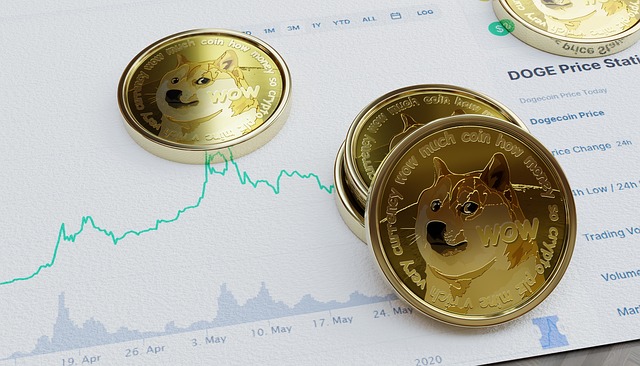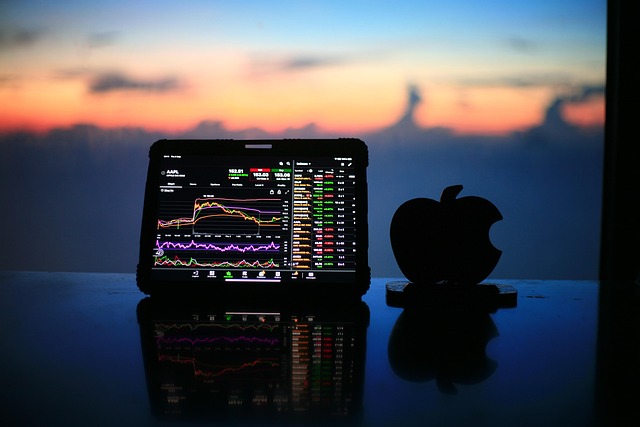Free Crypto Spot Trading Signals Telegram: Guide to Reliable Alerts
Author: Jameson Richman Expert
Published On: 2025-11-03
Prepared by Jameson Richman and our team of experts with over a decade of experience in cryptocurrency and digital asset analysis. Learn more about us.
Free crypto spot trading signals telegram channels can speed up research, point out trading opportunities, and help traders of all levels act faster — but they also carry risks. This comprehensive guide explains how Telegram trading signals work, how to evaluate free signal channels, the best practices for using them safely, and step-by-step examples for applying signals on major exchanges. You’ll also find resources for backtesting strategies, paper trading, legal considerations, and how to avoid common scams.

What are Telegram crypto spot trading signals?
Telegram crypto spot trading signals are alerts shared in Telegram groups or channels that recommend specific spot-market trades: which cryptocurrency to buy or sell, entry price, stop-loss, take-profit targets, position size, and sometimes the rationale behind the trade. These signals may be produced by human analysts, automated bots, or hybrid systems that combine algorithmic triggers with human oversight.
Spot trading differs from derivatives trading (futures, options) because you are buying or selling the actual asset on the exchange, not opening a leveraged contract. For an introduction to spot markets, see Investopedia’s explanation of the spot market.
Why traders use free crypto spot trading signals telegram channels
- Speed: Telegram delivers real-time messages, enabling quicker execution of trade ideas.
- Idea generation: Signals provide trade candidates you might not have spotted.
- Learning: Good channels explain reasoning and teach strategy over time.
- Cost: Free signals lower the barrier to entry for new traders.
Types of signal providers you’ll find on Telegram
- Independent analysts: Individuals sharing trades based on chart analysis or news.
- Trading rooms and communities: Groups where members post ideas and vote on setups.
- Algorithmic bots: Scripts that publish signals based on predefined technical conditions.
- Paid services with free tiers: Full-featured vendors that offer a low-cost or free sample channel.

How to evaluate free crypto spot trading signals telegram channels
Not all signal channels are equal. Use the checklist below to sort reliable channels from noisy or malicious ones:
- Transparency and track record: Look for historical performance posts with verifiable timestamps and screenshots or logs. Beware of channels that only post winners or that delete losing signals.
- Clear trade structure: Signals should include entry, stop-loss, and take-profit levels. Vague “buy now” messages are red flags.
- Rationale and education: High-quality providers explain why a trade is being taken, teaching members to think, not just follow blindly.
- Community feedback: Reviews and member comments in the channel can reveal strengths and issues. Verify with external reviews when possible.
- Free vs paid: Free channels can be valuable, but check what the paid tier offers and whether the free tier is intentionally limited to lure subscribers.
- Auditability: Can you backtest the strategy? If the provider links to public TradeView scripts or publishes CSV logs, that’s a positive sign. Check guides on how to use TradingView strategies for backtesting.
- Security and privacy: Never share API keys with withdrawal permissions and avoid signing up for apps that require unnecessary permissions. See the Binomo review on app risks and verification for an example of how to evaluate trading platforms and apps.
Red flags and common scams in Telegram signal groups
- Promises of guaranteed returns or “100% accurate signals.”
- Requests for upfront payment via untraceable methods (gift cards, crypto-only) without trial period.
- Pressure to deposit to a specific broker/exchange controlled by the group.
- Requests for API keys with withdrawal authorization.
- Fake performance screenshots or doctored trades.
If you suspect fraud, report the channel to Telegram and escalate to your local consumer protection agency. For general consumer protection resources, consult government sites like the U.S. Securities and Exchange Commission (SEC) or your national financial regulator.
How to use free crypto spot trading signals telegram safely — step-by-step
Below is a practical workflow for using a Telegram signal channel while protecting capital and learning effectively.
- Research the provider: Check transparency, track record, and community feedback.
- Paper trade first: Simulate trades using a paper trading account to validate the signal provider’s performance without risking capital. You can use the recommended paper trading guide to choose tools and apps for realistic simulation.
- Start small: If paper trading results are acceptable, start live trading with a small percentage of your capital.
- Use position sizing and risk management: Never risk more than a defined percent (commonly 1–2%) of your portfolio per trade.
- Verify signals independently: Confirm that the signal’s rationale fits your risk tolerance and aligns with your analysis before executing.
- Record and review: Keep a trading journal of signals traded, outcomes, and lessons learned.
Example: Executing a signal
Signal: “Buy ETH/USDT at 3,200; SL 3,040; TP1 3,520; TP2 3,840. Size: 1% of portfolio.”
- Check price and order book on your exchange.
- Calculate position size: for a $10,000 portfolio, 1% risk = $100 at risk. Determine how much ETH this translates to based on stop-loss distance.
- Place a limit or market buy at or near 3,200 and set a stop-loss order at 3,040.
- Set take-profit orders at TP1 and TP2, or plan to scale out manually.
- Monitor and adjust only if the channel explains updated information (new fundamentals or price structure changes).

Backtesting and validating signals
Reliable signal providers will allow or encourage backtesting. Backtesting a strategy or signal approach on historical market data helps reveal expected win rates, drawdowns, and risk-adjusted performance.
Use TradingView strategy scripting or a verified strategy sample to create reproducible backtests. See this TradingView strategy sample guide for a 2025 approach to building and testing strategies in TradingView.
Paper trading: why it matters and how to choose a platform
Paper trading replicates live trading without real money and is crucial when evaluating free crypto spot trading signals telegram channels. Paper trading helps you understand slippage, order fills, and emotional responses to wins and losses.
To choose a paper trading platform, consider:
- Realistic order execution model (slippage simulation).
- Access to live market data or near-real-time feeds.
- Ability to import/export trade logs for analysis.
- User-friendly interface and mobile support.
For a detailed comparison and recommended apps for paper trading, consult this complete guide to paper trading apps in 2025.
Where to execute signals: exchanges and account setup
When you’re ready to trade live, choose a reputable exchange with strong security, good liquidity for your trading pairs, and clear regulatory standing. Some popular exchanges you might consider (register through referral links if you want) include:
- Binance (register) — large spot liquidity and many listed pairs.
- MEXC (register) — competitive fees and variety of spot markets.
- Bitget (register) — integrated copy trading and spot services.
- Bybit (register) — strong spot liquidity and derivatives; check legal availability for your country.
Note: Always verify whether a platform is legally available in your jurisdiction before opening an account. See a guide to Bybit’s legal countries for 2025 for an example of how exchange availability varies by country.

Legal and regulatory considerations
Regulation for crypto varies widely worldwide. Some countries restrict or ban crypto trading entirely, others require exchanges to be licensed, and many are in-between. Make sure:
- You comply with local laws regarding crypto trading and taxes.
- You know the consumer protections (or lack thereof) in your jurisdiction.
- You use exchanges that meet regulatory standards (KYC, AML protocols) if required in your country.
Consult your local financial regulator for authoritative guidance. For users intending to use Bybit, reference the 2025 guide to legal countries to confirm eligibility and restrictions.
Risk management: protecting your capital when following signals
Following signals without risk rules is a common way to lose money. Adopt these time-tested rules:
- Set a maximum risk per trade: Commonly 1–2% of your portfolio.
- Use stop-loss orders: Never trade without one unless you have a justification and accept the consequences.
- Adjust position size for volatility: Larger price swings require smaller positions to keep risk constant.
- Diversify exposure: Avoid concentrating your entire portfolio on correlated trades.
- Monitor liquidity: Thinly traded pairs can have large slippage at entry/exit.
How to combine signals with your own research
Signals should complement your analysis, not replace it. Use a checklist when a signal arrives:
- Does the trade align with the broader market trend?
- Are the signal’s risk-reward and position sizing reasonable?
- Is there new fundamental or on-chain information justifying the move?
- Does it fit into your portfolio allocation and risk limits?
For technical confirmation, cross-check the signal setup on multiple timeframes and indicators (volume, support/resistance, moving averages, RSI). If you’re unfamiliar with these tools, free educational resources like Investopedia or TradingView’s built-in tutorials can help.

Automating signals vs manual execution
Some traders use automation (bots) to execute signals instantly. Automation reduces emotion and latency, but it requires technical setup and strong security hygiene.
Guidelines for automation:
- Use API keys with trading-only permissions (disable withdrawals).
- Keep API keys stored securely and rotate them periodically.
- Monitor bot performance and be ready to intervene for market anomalies.
- Paper test your automation thoroughly before deploying live.
Case studies: real-world examples
Below are short illustrative case studies demonstrating different outcomes when using free crypto spot trading signals telegram channels.
Case study 1 — Positive outcome from disciplined use
A trader subscribes to a free signal channel, paper trades for one month, and confirms the channel’s win rate and average risk/reward. After starting live with 2% of capital per trade, the trader follows signals but halves the position when they conflict with longer-term trend. Over three months the trader grows portfolio by 7%, mainly due to strict risk controls and journaling.
Case study 2 — Loss from blind following
Another trader joins a signal channel and blindly follows all signals with large position sizes. After a 30% drawdown caused by a market-wide crash and no stop-loss discipline, the trader loses a significant portion of capital. Lesson: Always use risk limits and verify signals yourself.
Case study 3 — Scam avoided via due diligence
A trader is invited to a closed Telegram group that recommends a new exchange app and asks members to deposit funds. The trader checks online reviews and finds the app listed as suspicious on multiple forums and decides not to deposit. Later the app is taken down for alleged fraud. Due diligence saved the capital.
Further learning and resources
To sharpen skills around signal evaluation and automated strategy testing, explore the following resources:
- TradingView strategy sample guide (2025) — guide to backtesting and creating reproducible strategies.
- Paper trading app guide (2025) — comparison of apps and tips for realistic simulation.
- Bybit legal countries 2025 guide — learn exchange jurisdictional restrictions.
- Binomo trading app review and verification — a case study on evaluating trading app legitimacy.
- Telegram (software) — Wikipedia — understand the platform many signal providers use.
- Cryptocurrency — Wikipedia — overview of the technology and markets.
- Investopedia — Spot Market — fundamentals of spot trading.

Checklist: Vetting a free crypto spot trading signals telegram channel
- Does the channel include entry/SL/TP? — Yes/No
- Are past trades archived with timestamps? — Yes/No
- Is there an independent track record or verifiable trade log? — Yes/No
- Are members encouraged to paper trade first? — Yes/No
- Does the channel ask for dangerous permissions (withdrawal API keys)? — Yes/No
- Are educational materials provided? — Yes/No
- Is there a reasonable, transparent paid tier if applicable? — Yes/No
Practical tips for improving signal-based trading performance
- Combine signals with broader market context: Use macro indicators (BTC dominance, overall market trend) before entering spot trades.
- Scale in and out: Use staggered entries or exits to improve fill prices and manage uncertainty.
- Keep trade logs: Record every trade’s reason and outcome for continuous improvement.
- Manage emotion: Follow your rules; avoid revenge trading after losses.
- Re-evaluate providers periodically: Markets change and a previously good channel can degrade.
Final thoughts and responsible use
Free crypto spot trading signals telegram channels can be a powerful supplement to a trader’s toolkit — but they’re not a shortcut to guaranteed profits. Use signals as ideas to be validated, not instructions to be followed blindly. Paper trade, manage risk, verify provider transparency, and never expose yourself to unnecessary operational risk (such as sharing withdrawal-enabled API keys).
As you gain experience, you’ll learn to blend external signals with your analysis, backtested strategies, and risk management routines. For deeper technical testing, refer to TradingView strategy tutorials and the 2025 strategy sample guide. If you’re evaluating exchanges, use the legal country guides and app verification resources linked above to make safe choices.
Disclaimer: This article is for educational purposes only and does not constitute financial or investment advice. Cryptocurrency trading carries risk and may not be suitable for all investors. Consult a licensed financial professional and your local regulations before trading.